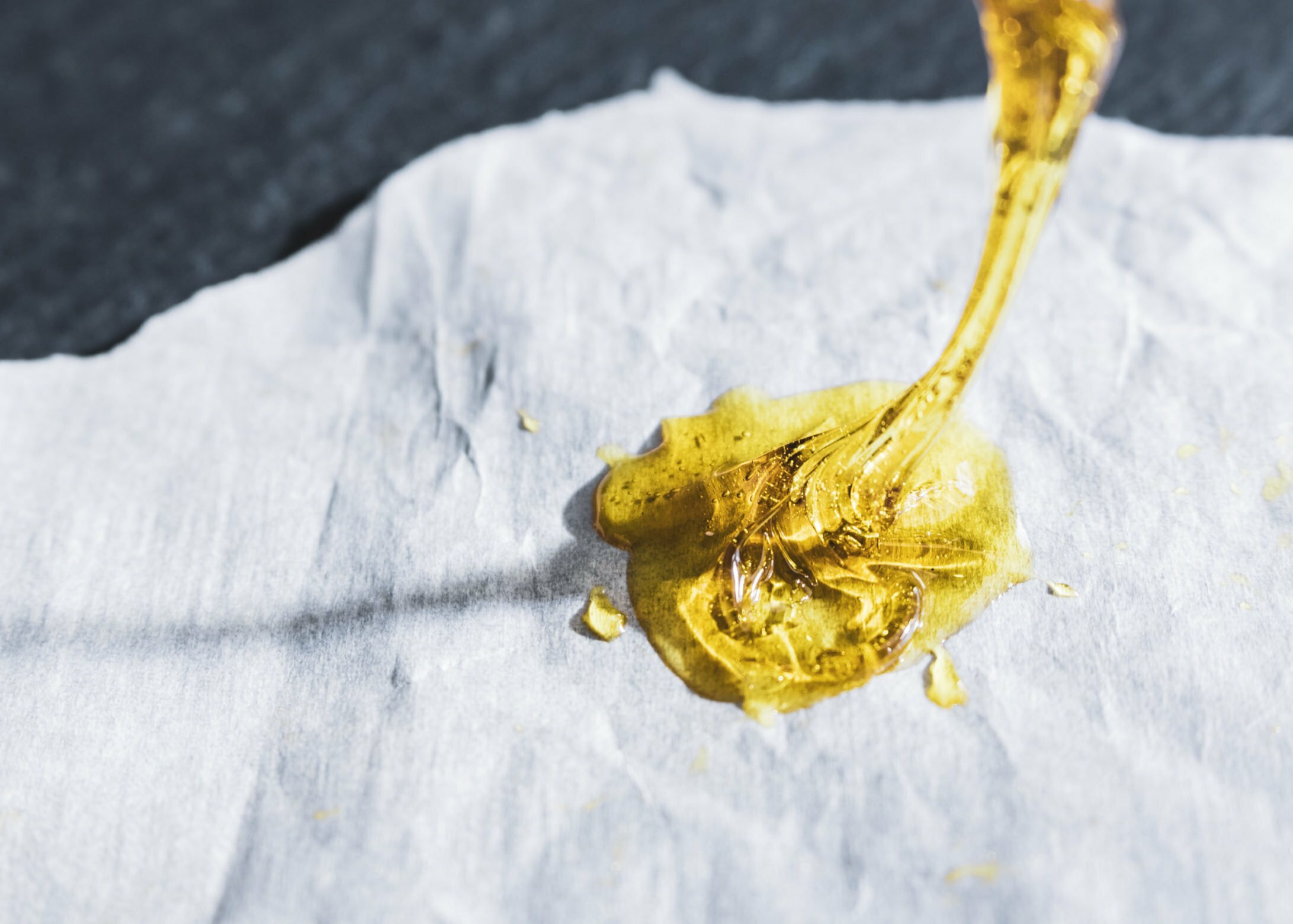What Is Live Resin?
When it comes to cannabis concentrates, there are seemingly endless options. From shatter to rosin, dabbing fans have plenty of products from which to choose. One extremely popular variety is called live resin extract. Available in both dab form and vape cartridges or pens, live resin is perfect for casual cannabis consumers and medical marijuana patients alike. But what exactly is live resin and what sets it apart from other types of dabs? This guide will answer all of your questions!
Live Resin — A Brief Breakdown
For traditional cannabis flower and most types of concentrates, the raw plant material goes through a drying and curing process after harvest. This removes water content while at the same time perfecting the bud for consumption. Live resin, however, is made from fresh, frozen cannabis. This is where the “live” terminology comes in. It can be manufactured using pretty much any extraction process, but closed-loop butane technology is one preferred process (more on that later).
The idea behind live resin is to preserve more of the terpenes within, which are the molecules responsible for the unique aroma associated with cannabis as well as some of the effects. While not all of the terpene profile or content is lost during the curing process, there is some natural evaporation. Live resin tends to have some of the highest terpene content out of any cannabis extract, something especially important for medical marijuana patients looking to get a full spectrum of benefits.
Who Invented Live Resin?
Live resin is credited to two Colorado-based cannabis industry pioneers: cultivator William “Kind Bill” Fenger and extraction expert Jason “Giddy Up” Emo. In 2013, Fenger sought to create butane hash oil using fresh frozen plant material, knowing terpene levels were higher in the raw bud. While his first attempt was somewhat successful, Fenger knew it was not sustainable in the current marketplace.
Later that year, Fenger was brought in as a consultant to Emo’s extraction company. The pair worked together to design a special closed-loop butane hash oil extractor able to handle low temperatures, something previously nonexistent. This made processing the flash-frozen plant material easier and resulted in a final product that’s rich in terpenes and attractive to consumers. It wasn’t long before live resin was on the map.
How Is Live Resin Made?
The original inventors of live resin used a machine called an OBE Extractor. In this process, cannabis plant matter is flash-frozen right after harvesting. It is then placed in tubes in the closed-loop system. Next, butane is put under immense pressure inside the machine and then cooled. The butane liquid then passes over the plant material, stripping off the active ingredients including cannabinoids and terpenes. This liquid is then further refined in another chamber of the machine in order to remove plant waxes and fats. Finally, the residual solvent is removed in a vacuum chamber; this is the only time in the process when heat is used to burn off butane gas, however, it is done in such a way as to not damage the integrity of the concentrate thanks to the pressure of the vacuum. The final product is a deliciously terpy substance with high THC content that’s perfect for vape carts or dabbing.
Producing live resin can also be achieved using processes like hydrocarbon and rosin presses. As long as the cannabis plant has not been dried and cured, the finished concentrate is considered live resin.
What’s The Consistency Of Live Resin?
Since live resin extract can be made in a variety of ways, there are several consistencies on the market. This cannabis concentrate may appear as a thick sap-like liquid, “budder,” sticky batter, sauce, or crumble. The viscosity may also be determined by any post-processing actions taken, such as aeration or “whipping” which makes the dabs lighter and fluffier.
What Are The Benefits Of Flash-Frozen Cannabis?
As mentioned earlier, live resin is created by cannabis plants with peak terpene levels. According to a 1995 study conducted at the University of Mississippi, just one week of air-drying cannabis at room temperature can lead to a 31% loss in terpenes. Researchers also noted the levels of monoterpenes, which have two isoprene units, and sesquiterpenes, which have three isoprene units in terms of their individual molecule content. Scientists found an overall reduction in both classes of terpenes but realized the sesquiterpenes evaporated at a slightly slower rate due to their larger molecular size.
Some of the most common cannabis monoterpenes include myrcene, terpinolene, limonene, and linalool. Prevalent cannabis sesquiterpenes include beta-caryophyllene and humulene. Live resin offers a more robust flavor profile than other cannabis oils or concentrates due to the prevention of terpene degradation.
In addition to its rich aroma and taste, the higher terpene levels in live resin may also bode well for the overall effects offered. Terpenes play a role in the way a cannabis strain makes the consumer feel, thanks in part to something called the entourage effect. This is the theory that all parts of the plant work together in perfect harmony to create the outcomes achieved through consumption. A 2011 study published in the British Journal of Pharmacology argued terpenes may aid or even amplify the effects of cannabinoids, which are the main active ingredients in cannabis.
How To Consume Live Resin
There are several ways to dab cannabis concentrates like live resin. Pre-filled vape pens and cartridges containing liquid live resin are extremely popular in legal marketplaces. The extract can also be consumed using a dab rig, which is a device somewhat resembling a water pipe. A small chamber called a “nail” is heated to nearly white-hot temperatures, typically with the use of a butane blow torch or electronic heat source. A small “dab” of concentrate is scooped into the nail using a special tool, almost immediately turning into vapor which is then inhaled through a mouthpiece. Residual oil is then removed using a cotton swab.
Another popular dabbing tool is called a nectar collector. These are elongated contraptions resembling a decked out straw. One end is heated, again either using a blowtorch or internal source. The heated end lightly touches live resin in its container, while the user inhales from the other end. Nectar collectors are slightly less cumbersome than larger rigs but need to be cleaned regularly to avoid clogging inside.
Live Resin — A Terpy Experience
Featuring delicious and fragrant flavors and aromas, live resin extracts are some of the most sought-after concentrates available to the cannabis community. Rich in terpenes, these dabs made from flash-frozen cannabis plants freshly harvested often command top-shelf pricing — and for good reason. Terpenes play a huge role in the overall sensory experience of cannabis, both for adult-use consumers and medical marijuana patients. Since these compounds may also factor into how the plant will affect the end-user, they could be even more important than previously thought. With this in mind, live resin will certainly continue to be a popular product for years to come.















